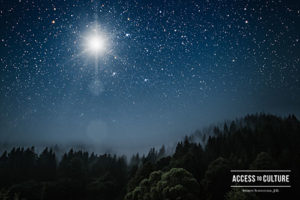
Credit: Stock.adobe.com By vovan
Global winter holidays are celebrated based on various belief systems, traditions, religions, philosophies, and the solstice. We have explored a number of Christmas customs in blogs discussing the Czech Republic and Colombia. We also answered reader’s questions about Advent and Hanukkah. We will be sharing blogs about German customs, and Kwanzaa soon. Today we share reader’s questions and our responses about the Winter Solstice.
Can you explain the solstice?
Solstice is a staying of the sun’s apparent motion over the latitudes of the Earth. At the summer solstice, the sun stops its northward motion and begins heading south. At the winter solstice, it turns north.
https://www.scientificamerican.com/article/dec-21-the-winter-solstice-explained/
What are the differences between winter and summer solstice?
Winter Solstice in the Northern Hemisphere occurs on December 21 and 22, which are the longest nights of the year because this is when the earth’s axis is farthest away from the sun. The length of the day is shortest. The summer solstice is just the opposite. On June 21 and 22 the daylight hours are the longest because the earth’s axis is closest to the sun.
Will you explain the history of winter solstice?
In medieval times, people living in the northern hemisphere feared the darkness. As the warmer months ended; the days became shorter and weather colder. Astronomy wasn’t yet a science and refrigeration wasn’t an innovation. When the sun disappeared earlier and earlier in the day, and darkness appeared, fear grew stronger that the sun wouldn’t ever reappear. After several months warmer weather and flowers appeared. Eventually, an understanding of the sun’s cycle developed. Celebrations of the sun’s appearance began a few days after the darkest day of the year.
How is winter solstice celebrated in different countries?
Greece: Lenaea, the winter solstice celebration or the Festival of the Wild Women included a man representing Dionysus the harvest god. He was devoured by women; then he was reborn. Years later, the human sacrifice was replaced by a goat and the women’s role was that of birth observers.
Iran: Shab-e yalda, the sun’s rebirth, was an ancient Iranian ceremony reflecting goodness and light against evil and darkness. The last day of the Persian month of ‘Azar‘ is the longest night of the year; the days then brighten. Traditions for Shab-e yalda include eating fruit and nuts for future prosperity.
Italy: Saturnalia, a December 17 festival for the Roman god of agriculture, Saturnus, lasted from one to seven days (depending on the current ruler). It featured public banquets, gambling and easement of social restrictions. Wax candle gifts were popular.
Sharon Schweitzer, J.D., is a diversity and inclusion consultant, cross-cultural trainer, modern manners and etiquette expert, and the founder of Access to Culture. In addition to her accreditation in intercultural management from the HOFSTEDE Centre and the Intercultural Communication Institute, she serves as a Chinese Ceremonial Dining Etiquette Specialist in the documentary series Confucius was a Foodie, on Nat Geo People. She is regularly quoted by BBC Capital, Investor’s Business Daily, and Fortune. Her Amazon #1 Best Selling book in International Business, Access to Asia: Your Multicultural Business Guide, now in its third printing, won a coveted Kirkus Star, and was named to Kirkus Reviews’ Best Books. She’s a winner of the British Airways International Trade Award at the Greater Austin Business Awards.
#crossculturalcommunication #cross-cultural #intercultural #accesstoculture #accesstoasia #holidayseason #etiquette #Advent #author #diversity #bestsellingauthor #awardwinningauthor #cross-cultural trainer #Intercultural communication, #internationalprotocolexpert #SharonSchweitzer #Texasetiquetteexpert #Internationalcelebrations

Leave A Comment